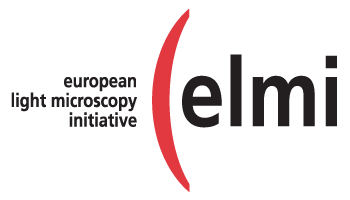Meeting Sessions
Meeting Sessions
The meeting at elmi2021 consisted of six sessions.
Live and Functional Imaging Technologies Part 1
Functional imaging represents a multitude of microscopy techniques that not only produce images of cells or tissues, but in addition deliver a specific contrast reporting on in situ properties of molecular and cellular function. For instance, whether biomolecules within the (sub)cellular space are immobilized or diffuse rapidly, whether they form complexes and whether molecules are active or inactive at a certain time point or location. Functional imaging relies heavily on quantitative and spectroscopy-based contrast methods in microscopy such as FRET, FLIM, FC(C)S, FRAP, FLIP, often in combination with optogenetics. Within the session, we invite abstracts from scientists working at the forefront of (applying) these techniques as well as those working on the design and application of special (genetically encoded) probes and sensors that report on specific functionality in cells. Abstracts are encouraged in and around this area.
Session Chair
Invited Speakers
Live and Functional Imaging Technologies Part 2
Real-time visualisation of dynamic biological processes is powerful for understanding biology and for various biomedical applications. In this session, we would like to cover a broad range of technologies that enable us to do so across length and time scales. Some examples include light sheet fluorescence and light field microscopies that capture fast biological events yet are extremely gentle on the samples, multi-photon microscopy that enables deep tissue imaging and label-free modalities like opto-acoustic and quantitative phase imaging. Abstract submissions are invited from developers of live imaging methods as well as from users with interesting applications in both in vivo and in vitro cultured systems.
Session Chair
Invited Speaker
Multiparameter and Multimodal Imaging for High Dimensional Data Acquisition
Obtaining spatially resolved microscopy data and information from cells, tissue and organisms is the key for basic and translational research, but also for diagnostics. New developments in instrumentation and sample preparation enable novel approaches for multimodal and multiparametric imaging. With these technologies, it is possible to acquire genomic, proteomic data and to place this information in a larger structural context. New sample preparation and multimodal imaging modalities are discussed towards multi-omics microscopy. Abstracts are encouraged in and around this area.
Session Chair
Invited Speaker
Correlative Microscopy Across the Scales
Combining different imaging modalities can generate more or better data than by utilising each modality as stand alone. It is a holistic approach that spans the entire resolution range from nano- to millimeters, and provides complementary information about structure, function, dynamics and molecular composition of the sample. The combination of light microscopy with TEM is well established (generally referred to as CLEM). Other modalities are however more and more integrated in correlative workflows. This can be in completely cryo mode to visualise molecular details but also using large scale imaging techniques such as light sheet, X-ray and Volume SEM to study intercellular relationships. Abstracts are encouraged in and around this area.
Session Chair
Invited Speakers
Super-Resolution Microscopy
The observation of sub-cellular structures at the smallest scale is essential in biomedical research to put more light in the understanding of the biological processes. Techniques as PALM, STORM, STED or SR-SIM permitted to overcome the diffraction-limited resolution of light microscopy down to tens of nanometres and some new cellular nanostructures emerged. This session will focus on the latest developments of super-resolution microscopy for imaging living cells, which will allow to visualize the organization, dynamic activity and interactions of sub-cellular structures and molecules in its natural context at a scale close to molecular level. Abstracts are encouraged in and around this area.
Session Chair
Invited Speaker
Image Data Analysis, Management and Visualisation
One of the key goals of microscopy is to extract quantitative information about the structures and processes being imaged, and data analysis methods are integral to this. Image analysis approaches must evolve to keep up with both advances in microscopy techniques and advances in emerging computational methods. Automated, high-throughput, and multi-dimensional microscopy acquisitions present further challenges not just for extracting information from images, but also for managing and visualising large datasets. This session will cover recent advances in image analysis techniques and how researchers can choose the correct analysis approach for their acquired images. Abstracts are encouraged in and around this area.
Session Chair
Invited Speaker


































